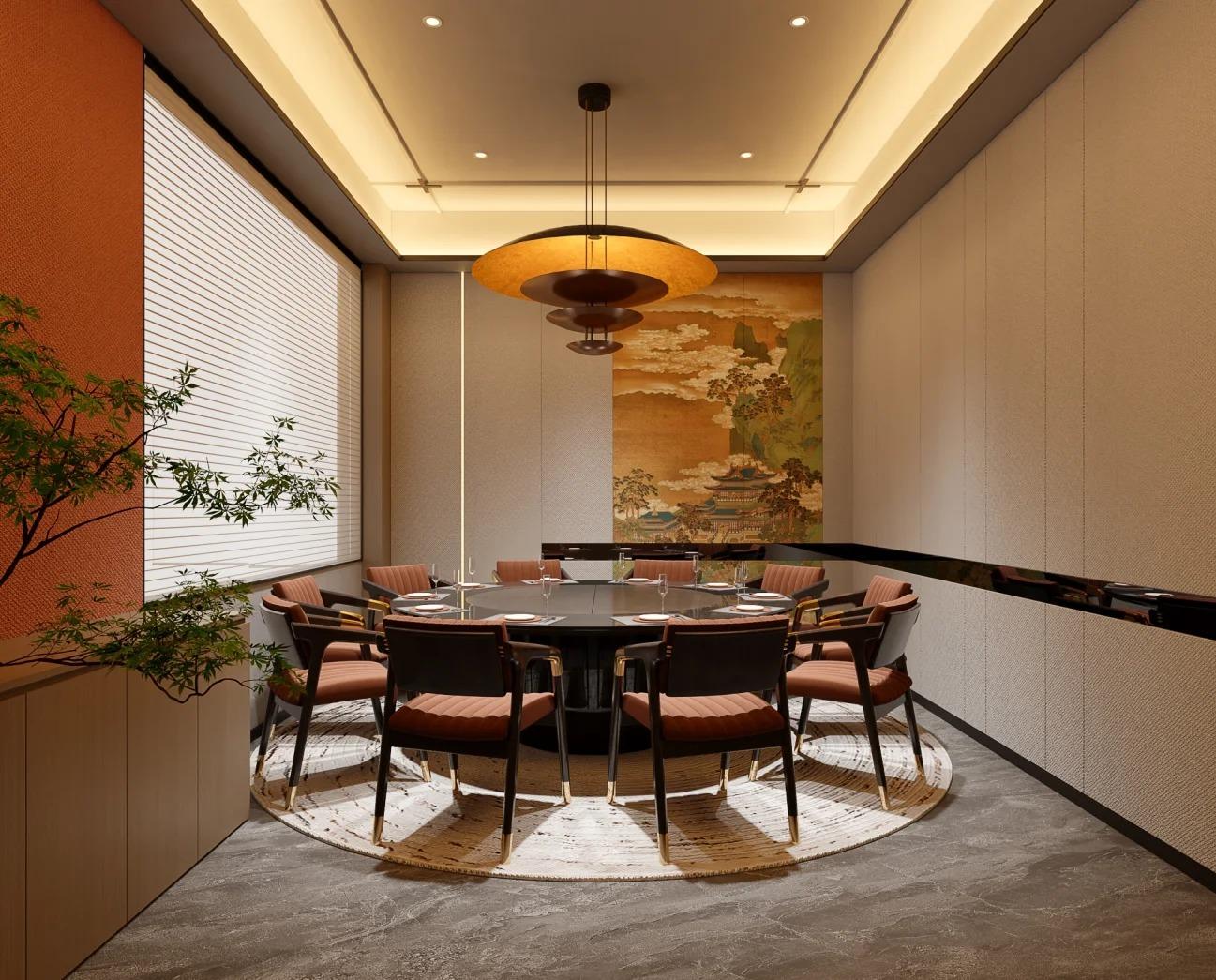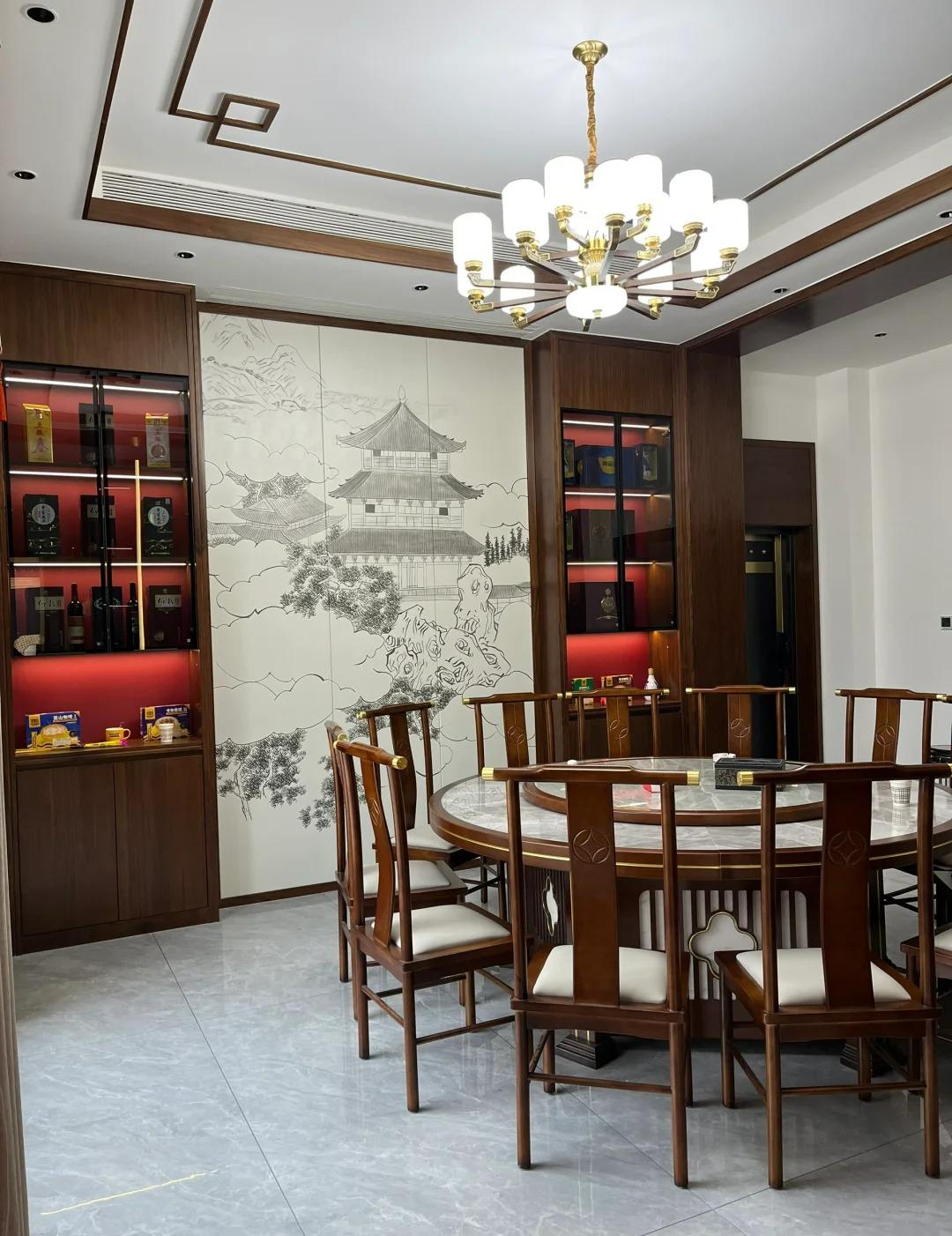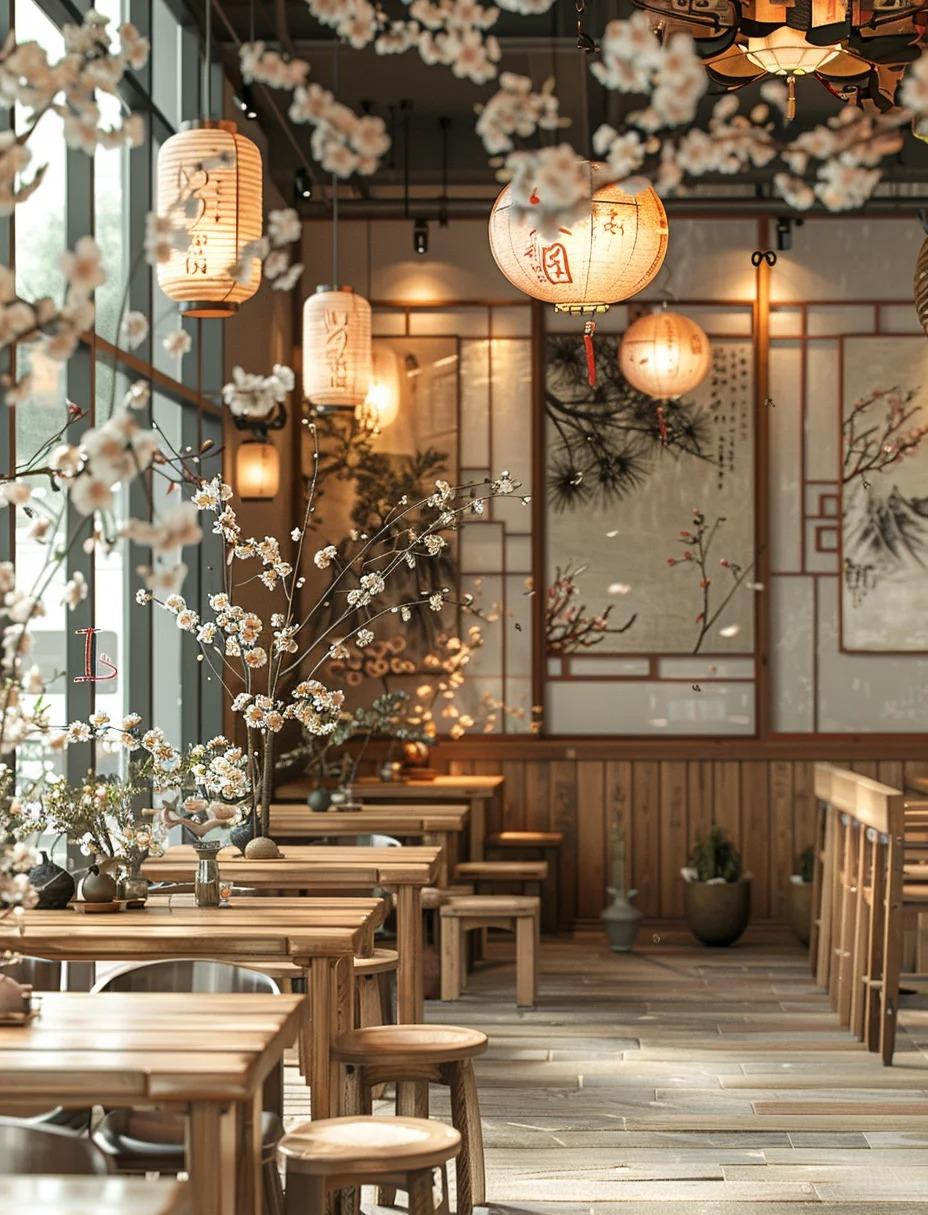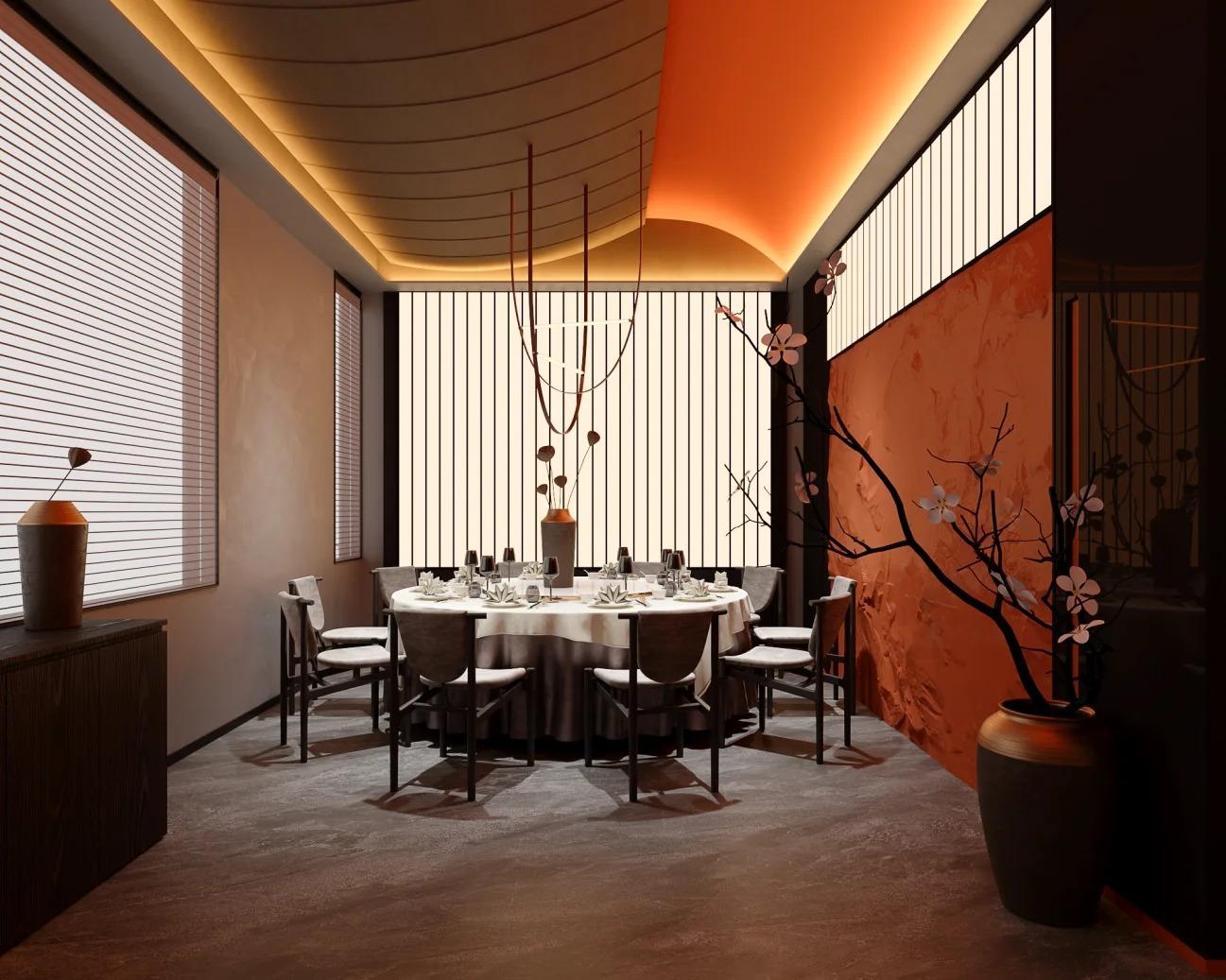Introduction to Chinese Dining Rooms
In Chinese culture, the dining room is more than just a place to eat; it’s the heart of the home, where families gather, relationships are nurtured, and traditions are passed down through generations. The layout of a Chinese dining room reflects the importance of communal eating and social harmony.
A typical Chinese dining room centers around a large table, often round in traditional settings, surrounded by chairs or stools. The space is designed to facilitate conversation and the sharing of dishes, embodying the Chinese proverb: “To know the road ahead, ask those coming back.”
While traditional dining rooms exude warmth through dark woods and red accents, modern Chinese dining spaces often blend cultural elements with contemporary design, creating a unique fusion that honors heritage while embracing the present.

Traditional Chinese Dining Room Elements
The Round Table: A Symbol of Unity
The round table is a cornerstone of Chinese dining culture, symbolizing unity and promoting equality among diners. Its shape allows everyone to face each other, facilitating conversation and the easy sharing of dishes.
| Element | Significance |
|---|---|
| Round Table | Unity, equality, ease of conversation |
| Lazy Susan | Convenient sharing of dishes |
| Tea Trolley | Easy access to tea and small dishes |
Seating arrangements often follow a hierarchy, with the host or most honored guest facing the door. This position, known as the “seat of honor,” is typically reserved for elders or distinguished guests.
Decorative elements play a crucial role in creating atmosphere:
- Scrolls: Often featuring calligraphy or landscape paintings
- Lanterns: Providing soft, warm lighting
- Wooden screens: Offering privacy and artistic value

Modern Chinese Dining Room Trends
Contemporary Chinese dining rooms blend tradition with modernity. Many homes now feature rectangular tables, allowing for more flexible seating arrangements. The color palette has expanded beyond traditional reds and golds to include neutral tones and bold accents.
Popular materials include:
- Glass tabletops for a sleek look
- Stainless steel accents for a modern touch
- Sustainable bamboo for an eco-friendly approach
In upscale homes, smart home technology is making its way into dining rooms. Automated lighting systems and temperature controls create the perfect ambiance for any dining occasion.

The Art of Table Setting in Chinese Dining
Chinese table settings are an art form in themselves. Each diner typically has:
- A small plate or bowl for individual portions
- A pair of chopsticks
- A spoon for soups or congee
- A teacup
The center of the table is reserved for shared dishes, often placed on a Lazy Susan for easy access. During formal occasions or festivals, table settings become more elaborate, with special dishware and auspicious decorations.
Regional variations add diversity to table settings. For instance, Sichuan cuisine often includes small plates for spicy dipping sauces, while Cantonese settings might feature small bowls for individualizing portions of communal dishes.

Feng Shui Principles in Chinese Dining Rooms
Feng Shui plays a significant role in Chinese dining room design. Ideally, the dining room should be located in the center or east of the home to promote family harmony and health.
Key Feng Shui principles for dining rooms include:
- Placing the table in a commanding position with a view of the door
- Using colors that promote appetite and conversation (e.g., earth tones, soft yellows)
- Avoiding mirrors that face the table, as they’re believed to double the appetite and lead to overeating
Common taboos include placing chopsticks vertically in rice (resembling incense sticks at funerals) and positioning the table directly under a beam, which is thought to create pressure on diners.
Dining Etiquette in Chinese Homes
When dining in a Chinese home, observing proper etiquette is crucial. Some key points to remember:
- Wait for the host to begin eating before starting your meal
- Use serving chopsticks or spoons to take food from communal dishes
- Never stick chopsticks upright in your rice bowl
- Pour tea for others before filling your own cup
During formal dinners, dishes are often served in a specific order, starting with cold appetizers and progressing to hot main courses. The host may continually encourage guests to eat more as a sign of hospitality.

Experiencing Chinese Dining Rooms as a Traveler
For travelers eager to experience authentic Chinese dining rooms:
- Homestays: Offer opportunities to dine with local families
- High-end restaurants: Often feature private dining rooms decorated in traditional styles
- Cooking classes: Many include meals in traditional settings
When invited to a Chinese home for dinner:
- Bring a small gift for the host (avoid clocks or knives, which have negative connotations)
- Arrive on time or slightly early
- Offer to help with preparation or cleanup, but don’t insist if declined
- Compliment the food and express gratitude for the hospitality
By understanding the cultural significance of the Chinese dining room, travelers can gain deeper insights into Chinese family life and social customs. Whether you’re seated at a round table in a traditional home or enjoying a modern interpretation in a chic restaurant, remember that each meal is an opportunity to experience the warmth and hospitality that are hallmarks of Chinese culture.





